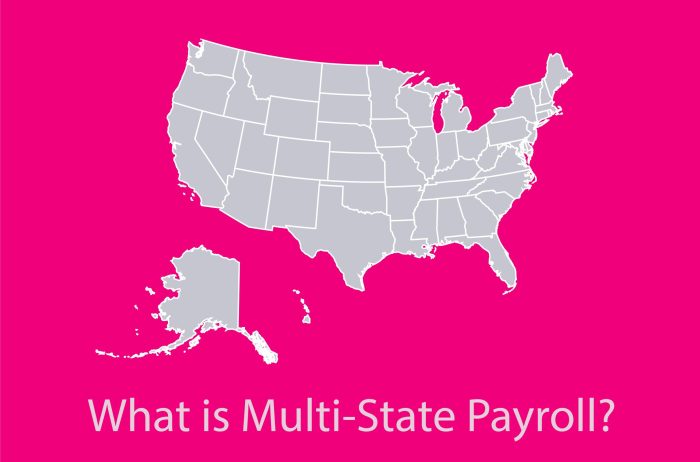A Complete Guide to Multi-state Payroll Management

Multi-state payroll management is the process of managing payroll for employees who work in different states. It applies to businesses with:
- Multiple locations.
- Remote employees working from other states and
- Employees traveling to other states for temporary work assignments.
Managing multi-state payroll can be tedious for businesses as each state has its tax laws and regulations.
Businesses need a strategic approach to multi-state payroll management to handle these challenges effectively.
Tax Compliance
Understand Reciprocal Agreements: Some states have reciprocal agreements that allow employees to avoid paying income tax in both their work and home states. Understanding these agreements can help businesses manage tax withholding more effectively. These agreements can simplify tax obligations for employees who live and work in different states.
Wage and Hour Regulations
Understand State Minimum Wage Rates: Keeping track of federal, state, and local minimum wage rates is vital to ensure compliance and avoid wage disputes. If the law changes, adjust the payroll system accordingly.
Adhere to Overtime Rules: Employers must ensure they comply with state-specific overtime regulations to avoid penalties. Businesses should implement timekeeping systems to track employee hours and manage overtime compliance. Read here how PeopleWorX’s timekeeping system calculates time and attendance effectively.
Pay frequency Requirements: Individual states may have specific requirements for how often employees must be paid. Employers should establish a payroll schedule that meets or exceeds these requirements to ensure compliance. Regular and predictable pay periods are crucial for employees’ financial planning and overall job satisfaction.
Employee Benefits and Deductions:
Review State Mandates: Some states have mandates for employee benefits, such as paid sick leave or family leave. Employers must review and comply with these mandates to avoid legal issues. Understanding state-specific benefit requirements is essential for effective benefits administration.
Coordinate with Benefit Providers: Working closely with benefit providers is essential for accurate deductions and compliance with state regulations. Regular communication and strong relationships with benefit providers can enhance benefits administration and employee satisfaction.
Educate Employees: Educating employees about their benefits and deductions is essential for ensuring understanding and satisfaction. Providing clear and concise information can help employees make informed decisions about their benefits. Effective communication can enhance employee engagement and retention.

What are the Best Practices for Multi-State Payroll Management?
To effectively manage multi-state payroll, businesses should implement the following best practices:
- Centralize payroll operations.
- Stay on top of State-specific regulations.
- Leverage technology by using appropriate software solutions.
- Implement a consistent payroll schedule
- Integrating payroll with the HR system.
- Perform regular audits.
- Streamline multi-state payroll with PeopleWorX.
How to Navigate the Multi-State Payroll Compliance Framework
- Locate your employee location and know the jurisdiction.
- Master the basics like federal payroll taxes, FLSA requirements, employee classifications etc.,
- Dive into state-specific requirements like state income tax and withholding rates, minimum wage laws, overtime rules, paid leave requirements, pay frequency, and state unemployment insurance rates.
- Check the local laws like city-specific minimum wage rates, local paid sick leaves, and commuter benefits.
- Stay on top of changing laws and regulations
- Befriend technology for robust processes.
- Educate and communicate to your employees periodically about compliance and policies and review the processes with your team.
Managing multi-state payroll can be complex, but by following best practices, businesses can ensure accurate and compliant employee compensation. Implementing these strategies requires commitment and investment, but the benefits of improved compliance, efficiency, and employee satisfaction are well worth the effort.
